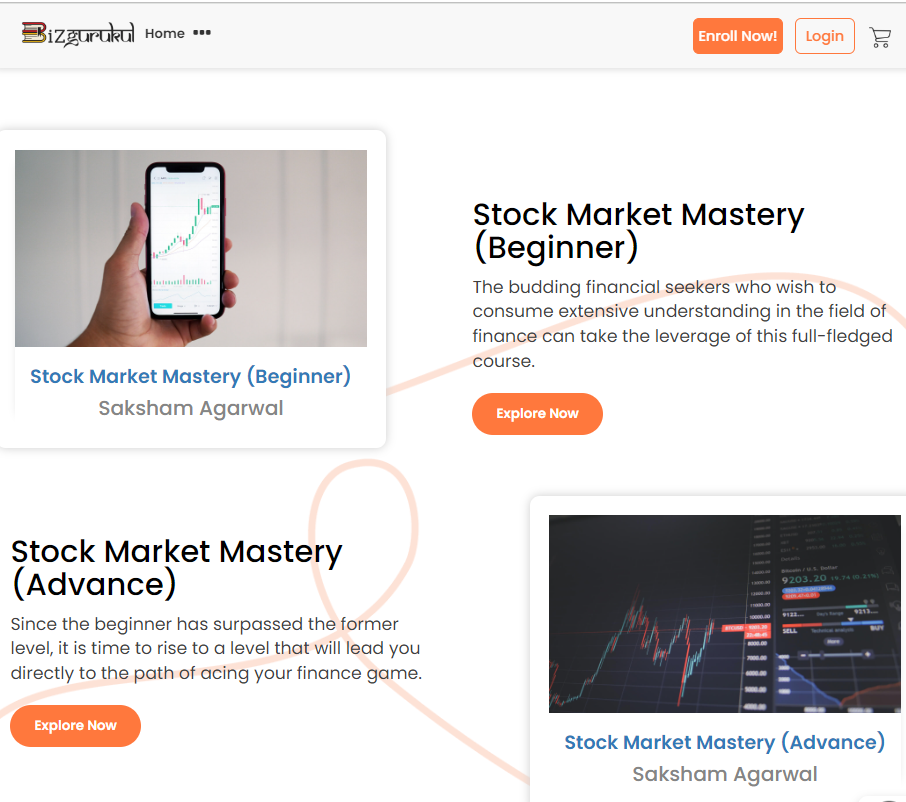Setting the right price for your online course will help you reach your ideal financial goal.
The price that you set also sets an expectation of the value that the custom is going to get after signing up for your learning course.
If it’s too high, you might not be able to make a profit since few people will sign up. If its too low, people may not sign up thinking that its value is too low.
Knowing how to strike a balance will get you the number of customers you need. In this guide, we will tell you how to price your online course that suits your customer’s interest the best. Let’s go!
Factors to consider when pricing your online course
When you plan to sell courses online, you need to decide what topic you want to build your course on. Here are the factors that will determine what you should then price the entire course.
1. Value Proposition
What are you teaching? If the topic is a niche topic, and there aren’t too many online courses about that topic. You can set a higher price without losing too many customers since there is a limited supply of expertise in that field.
Consider niche topics like using AI for your business, cybersecurity, home staging etc.
It is always a good idea to have a unique selling proposition (USP) when selling a course online even if the topic of content is mainstream/ People will want to enrol in your courses for 2 reasons:
- You are a proven expert with excellent testimonials by previous customers
- Your coverage of the topic has something unique to offer
Once you have chosen your USP, you can set a price accordingly for your course.
2. Market Research
Sounds obvious, but important – Do market research.
First create a buyer persona for your course to understand the ideal amount your ideal target audience will be willing to pay.
See what your competitors are pricing courses on the same topic. Also research their target audience and their demographics, income level and more.
After knowing all this you can then set an average price that you can sell your online courses for.
Related read: How to set the right price for products
3. Course content and complexity
Another factor that goes into consideration is how complex your course is.
If your competitor has a course on taxes that is 3 hours long with 1 expert , and you have a course on taxes that is 20 hours long with multiple experts, your course is more complex and long.
That will also mean you should charge a lot more on the topic.
Here is how Bizgurukul, an online upskilling platform has two separate courses with different prices based on how complex and long each course is.
See how technical and complex your content is. Advanced content that is meant for people who are already proficient to some degree, will be priced higher than courses for beginners.
Common pricing models for online courses
Once you have understood what is the range in which your courses would sell successfully, you can choose a model of pricing. The landscape of online courses has evolved and there are a lot of varieties that students get to experience.
To stay competitive, you could:
1. Offer fixed pricing
In this model, a customer would pay you a flat fee regardless of what are the topics you are creating courses on.
These prices are pre determined and non negotiable. Students usually pay a flat fee that gives them lifetime access to that particular course.
This model is great if you are selling a course that is cohort based and limited. So if you are selling courses online for photography, stocks etc. you could consider setting flat fees for these.
Udemy is an example of a flat fee pricing model. They have a flat fee for specific courses.
2. Tiered pricing
In this model. The pricing differs based on the expertise level of the same topic.
For example, if you want to teach your customers marketing, the course needs to cater to:
- Beginners who would learn basics like target audience, market research, buyer persona etc.
- Intermediate customers would learn about retargeting, paid ads, abandoned carts and more.
- Experts would want to learn about SQLs, automation, data harvesting, martech and more.
The price to different tiers would differ based on what you’re offering. As the course gets more advanced, the number of people signing up will also reduce.
So the pricing is always the least for beginner courses and then goes up as it gets more advanced.
At mojoVersity, a learning platform by Instamojo for SMEs, the courses are handcrafted for beginners. Since the courses are created for customers who would want to know the basic foundations of building a business, we charge absolutely nothing for the course.
Explore free courses
3. Subscription pricing
When a student subscribes to your plans, they are agreeing to pay you in intervals. In return they are getting the promise of new courses periodically and more value than a just a one time course offer.
You will need to keep your subscribers engaged with regular content so that they continue to pay their subscription fees.
Related read: How to start a subscription business: A beginner’s guide
This is a difficult model which requires a lot of new content regularly with a variety of experts and topics.
Selling a course online? Set up a store for with Instamojo, India’s leading #D2CTech platform.


